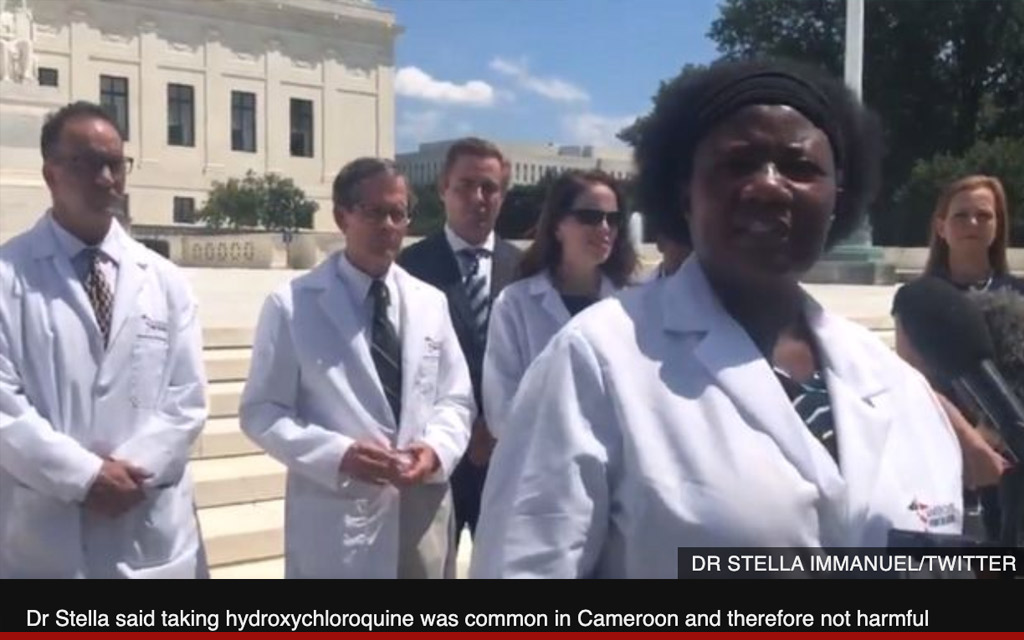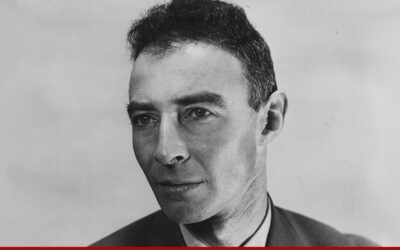Whoops, it happened again. Another off the charts crazy video that our President retweeted.
CNBC’s Sam Shead offered one version of the story behind this week’s fake which showed “America’s Frontline Doctors” peddling a cocktail of hydroxychloroquine, Zinc, and Zithromax as a Covid-19 cure. It starred a group of white-coated “doctors”, and went viral and was retweeted by the President and countless others before it was removed from major social media networks.
According to Snead:
The video was created by right-wing media outlet Breitbart. It depicts a group of people dressed in white lab coats — who call themselves “America’s Frontline Doctors” — staging a press conference outside the U.S. Supreme Court in Washington, D.C. Those in the video claim that the anti-malaria drug hydroxychloroquine is “a cure for COVID” and “you don’t need a mask” to slow the spread of coronavirus.
It’s just the latest example of a non-pandemic virus that plagues us. Fake news. As video becomes the hieroglyphics of our time, we’ll rely on it to communicate more than ever. And increasingly we’re coming to doubt the veracity of all things video. With election season in full swing and a pandemic that seems everlasting, we’re readying ourselves for an onslaught of fake videos — riots, protests, elongated noses, fake doctors, fake cures. The assault continues to ramp up.
AI is getting trained on large sets of real and fake data as I type. Perhaps it will soon be helpful in helping us determine whether a video has been digitally altered. But what if a video has not been altered, like one would be if Jennifer Garner’s head were put on a porn body, but is just patently false?
Last week I spoke to two companies that are actively looking to solve the fake video problem by making sure we know the origin of the video.
Yaza, founded by a number of industry veterans, is using date and time stamps overlaid on maps to prove the exact time and place a video was shot. Because you capture the video from within the Yaza app (now available on iOS only but due out on Android soon) and because it’s stored in a secured cloud requiring permissions to share, the video and its origin is immutable.
Peter Sisson, CEO of the company, calls Yaza “certified reality.” In the closed-loop world of Yaza, the video is created, stamped with a time and date, and placed on a geographical map. Its creator has the sole ability to share it with a public or private group, or simply to keep videos private.
If you want to share the video to other social media platforms like Facebook or Twitter you can, but it’s served from the Yaza cloud. While this approach by no means eliminates the risk of altered videos in general, it protects the videos of those who use it from secret alteration.
Today the company is launching with an emphasis on the real estate market. Virtual home tours and remote tracking of construction work are two proofs of concept. The company plans on using a “Dropbox” model for generating revenue. The app is free; the storage is not. Sisson believes the app is on track towards restoring confidence on the Internet. Ultimately, he believes Yaza can help journalists, politicians, and anyone using video messaging prove a video’s authenticity. Of course, that proof relies on using the Yaza app as your video platform.
Streambed Media is a different animal. Its focus is on creating a platform for ownership of video and then monitoring its distribution. Think of it like the HootSuite for video. (That service allows paid users to manage postings and actions on all their social accounts.) When you upload a video, Streambed indexes it on a blockchain, with a public, immutable record of the video’s existence. Every time new content (say an edited version of the original) is uploaded, an index page is generated containing all verified proofs for that content.
Michael Casey, founder of Streambed Media believes solving the problem of truth in video will “require a mix of technological and societal solutions, but blockchain-based provenance tracking systems (such as the one that underpins Streambed’s technology) is a must-have part of it. “
“However” he continues, “taken alone, blockchain-based immutable proof of the origin of video is not enough. We’re going to need downstream recipients of videos (such as platforms) to run counteractive AI sweeping programs that can detect changes to images. When combined with pixel-hidden embeds of links to the original video metadata, this gives us a way to both detect changes and establish provenance. It’s in that metadata solution where blockchain-based products like Streambed potentially become valuable.”
Streambed aggregates different versions of the same video (including remixes, memes, clips, compilations etc.) and maps them on a dashboard for its subscribers. This makes it easy to see who has shared, edited, or mixed the original. Today, the focus is selling the platform to folks like news organizations and large corporations of networks that use video to communicate. It’s for people who want a more powerful tool that lets them track videos as they travel through distribution channels. But ultimately, the underlying blockchain foundation is a cornerstone of a system that makes it easy to track proof of origin and leave a step by step accounting of what’s happened to the video over time.
Gartner says that blockchain technology “is anticipated to help authenticate over 5% of worldwide news and video content as real by 2023,” with major news and domestic organizations leveraging blockchain technology to do so as early as next year. Blockchain uniquely can support trust in the supply chain and asset tracking, trust in the provenance of digital assets and physical goods, and trust in the identities of providers, consumers, and businesses, among other benefits.”
The abundance of fake video and information we’ve been encountering is already head spinning. It led World Health Organization Director-General Tedros Ghebreyesus to say in February: “We’re not just fighting an epidemic; we’re fighting an infodemic.” Combine pandemic misinformation with an upcoming election and geopolitical turmoil and the alarms start sounding. One account based on a respectable study says fake news travels 10 times faster than real news. AI and machine learning will probably become masterful as spotting fake videos if they’ve been altered, but knowing the origin of a message (the recent Breitbart video for example) may be the best hope we have for judging its veracity.
READ MORE: https://techonomy.com/2020/07/as-fake-videos-threaten-new-tools-help-fight-back/




